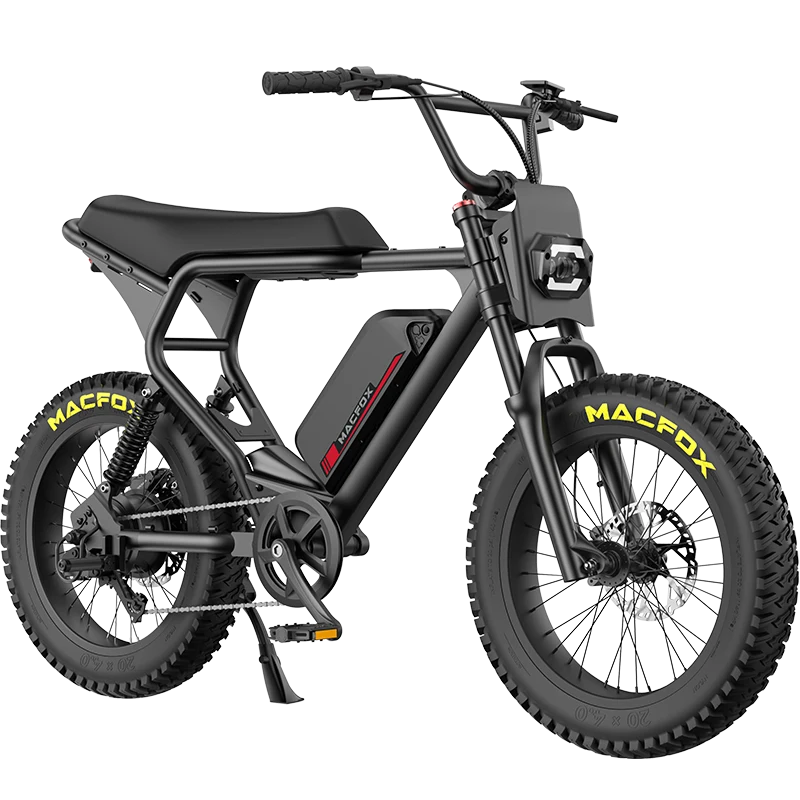As electric bikes (e-bikes) become more popular for outdoor recreation, many visitors to U.S. national parks are eager to explore these majestic spaces on two wheels. The good news is that e-bikes are now allowed in many national parks, but there are some important rules and regulations you should be aware of. Understanding these policies will help ensure that your ride is not only enjoyable but also in line with park guidelines.
In this blog, we’ll explore the current policies on e-bike usage in U.S. national parks, including where they’re allowed, restrictions, and tips for riding responsibly.
E-Bike Regulations by the National Park Service (NPS)
The National Park Service (NPS) has established clear regulations for e-bikes to enhance accessibility for visitors while preserving the natural beauty and resources of national parks. Here’s what you need to know:
E-Bike Classification
E-bikes in national parks are classified into three categories:
-
Class 1 E-Bikes: Pedal-assist only (no throttle), providing assistance up to 20 mph (32 km/h).
-
Class 2 E-Bikes: Pedal-assist with a throttle, assisting up to 20 mph (32 km/h).
-
Class 3 E-Bikes: Pedal-assist with a throttle, providing assistance up to 28 mph (45 km/h).
All Class 1 and Class 2 e-bikes are allowed in national parks where traditional bicycles are permitted. Class 3 e-bikes are typically restricted to paved roads and not allowed on multi-use paths or trails.

Where Can You Ride E-Bikes in National Parks?
The good news is that Class 1 and Class 2 e-bikes can be ridden on paved roads, bike paths, and multi-use paths in most U.S. national parks. However, there are still some restrictions, particularly in more sensitive areas of the parks.
1. Wilderness Areas
E-bikes are not allowed in wilderness areas. These areas are protected by law to preserve their natural state, and all types of motorized vehicles, including e-bikes, are prohibited.
2. Oversnow Areas
E-bikes are generally not permitted on oversnow roads during the winter months when these paths are designated for winter recreation activities, such as cross-country skiing and snowshoeing.
3. Specific Park Regulations
Each national park may have additional specific regulations regarding where e-bikes are allowed. For example:
-
Yellowstone National Park: E-bikes are allowed on most paved roads and bike paths, but Class 3 e-bikes are restricted to paved roads only.
-
Yosemite National Park: The park allows Class 1 and Class 2 e-bikes on paved roads, but some areas, such as certain multi-use trails, may have speed limits or restrictions.
-
Acadia National Park: Only Class 1 e-bikes are allowed on the carriage roads and Schoodic bike paths. Class 2 and 3 e-bikes are prohibited for safety reasons.
It’s always a good idea to check the specific park’s rules before your visit, as they may vary widely.

Riding Responsibly: Key Guidelines for E-Bikes in National Parks
While e-bikes provide a great way to explore national parks, it’s essential to follow park guidelines to ensure a safe and responsible experience.
1. Stay on Designated Trails
E-bikes should be ridden only on trails and paths that are open to traditional bicycles. Avoid riding off-trail to protect the park's ecosystems and prevent damage to natural habitats.
2. Follow Speed Limits
Many parks have speed limits in place to protect both riders and pedestrians. Always follow posted speed signs and adjust your speed for trail conditions.
3. Respect Other Visitors
E-bikes can travel faster than traditional bicycles, so always be mindful of other park visitors. Yield to pedestrians and hikers on trails and be courteous to other cyclists.
4. Be Aware of Wildlife
National parks are home to diverse wildlife. Always keep a safe distance from animals, and avoid disturbing their natural behavior. If you encounter wildlife on the trail, slow down and give them plenty of space.
Tips for Choosing the Right E-Bike for National Park Exploration
If you’re considering an e-bike for your next national park adventure, here are some tips to help you select the best one:
-
Consider the Terrain: If your park visit involves steep inclines, look for an e-bike with a higher-powered motor, such as a 750W motor, for added support.
-
Choose a Bike with Good Suspension: To handle rough trails and bumps, opt for an e-bike with full suspension to ensure a smoother ride.
-
Battery Life: For long rides, ensure your e-bike has a long battery range (at least 60-100 km), especially if you plan on exploring remote areas of the park.
-
Lightweight Design: If you plan on carrying your e-bike or need to lift it, choose a lightweight model that is easy to manage.
FAQs
1. Can I use a Class 3 e-bike in national parks?
-
Class 3 e-bikes are typically restricted to paved roads and not allowed on trails or multi-use paths in most national parks.
2. Are e-bikes allowed in wilderness areas?
-
No, e-bikes are prohibited in designated wilderness areas within national parks.
3. Do I need to follow speed limits on e-bikes in national parks?
-
Yes, always adhere to posted speed limits and adjust for trail conditions to ensure safety for all park visitors.
Conclusion
E-bikes are an exciting and eco-friendly way to explore U.S. national parks, but it’s essential to follow the rules and regulations to ensure a safe and enjoyable experience. Class 1 and Class 2 e-bikes are widely accepted on paved roads, bike paths, and multi-use trails, while Class 3 e-bikes are more restricted. Always check specific park guidelines before heading out, and ride responsibly to help protect these natural treasures.
Featured Articles:
- Acan You Ride An Ebike In Yellowstone Naitonal Park
- Ride a Long Range Electric Bike Through Ohio’s National Parks and Preserves
- Explore the Adirondack Park Loop with Macfox's Fat Tire Electric Bike
- Exploring the National Park on an Electric Bike | a Sustainable Adventure
- Ride a Long Range Electric Bike Through Ohio’s National Parks and Preserves


















